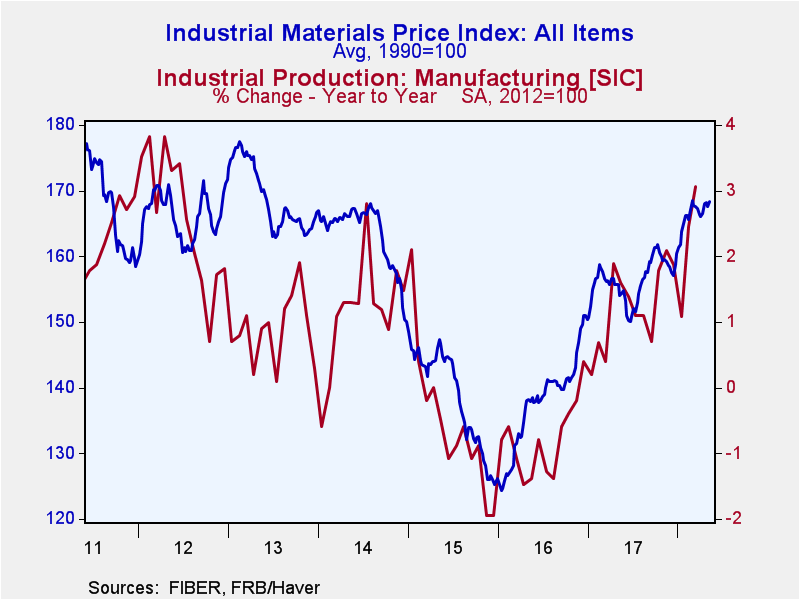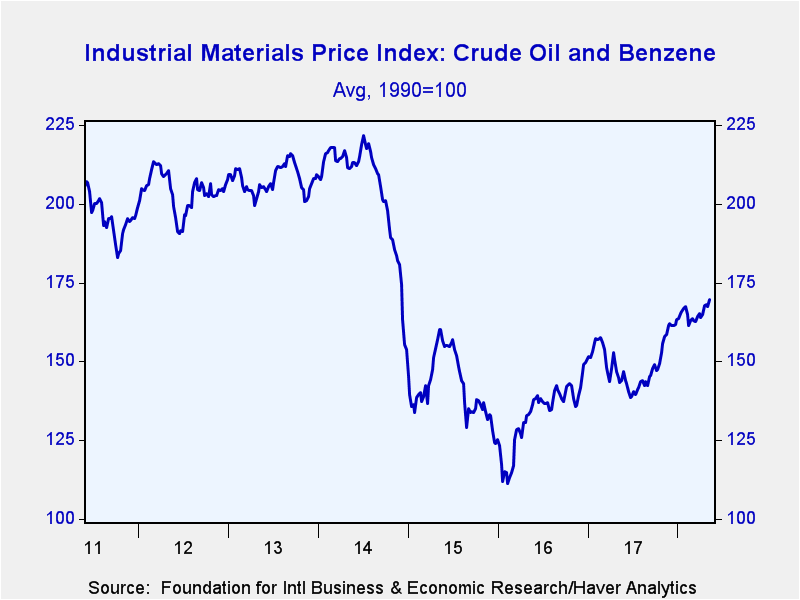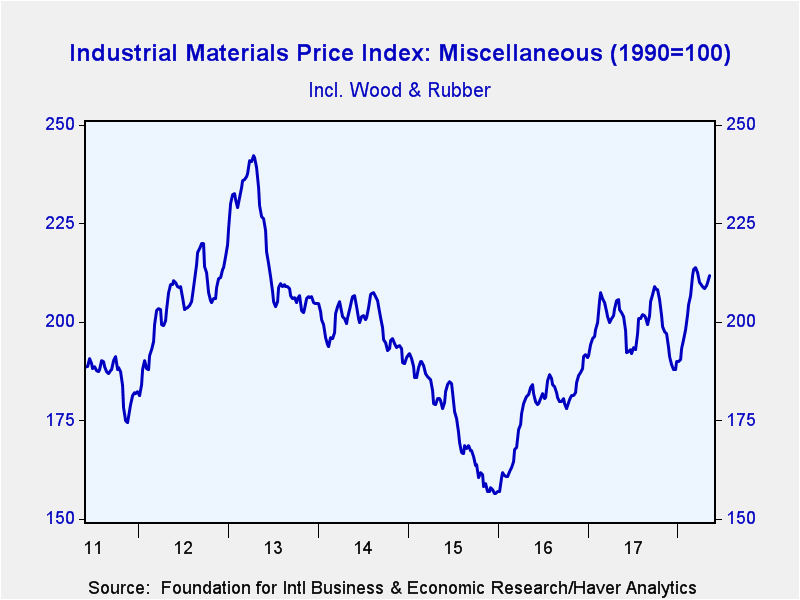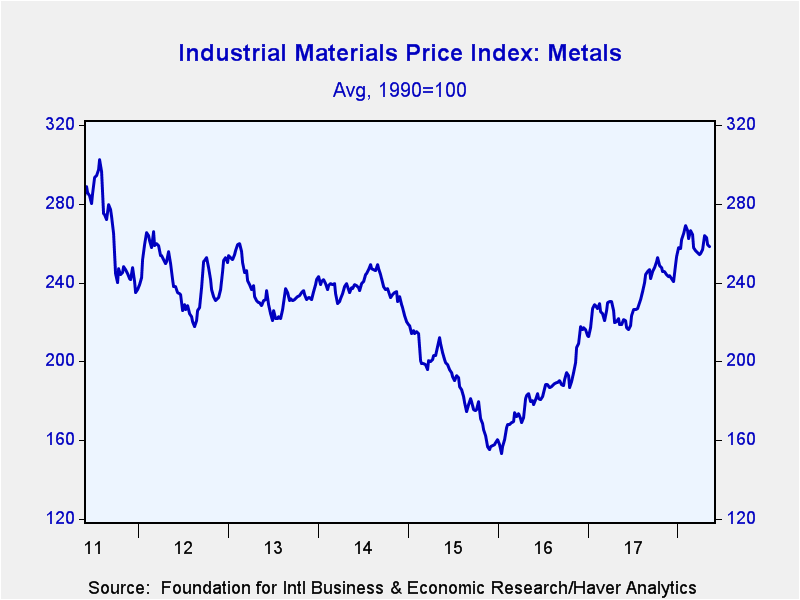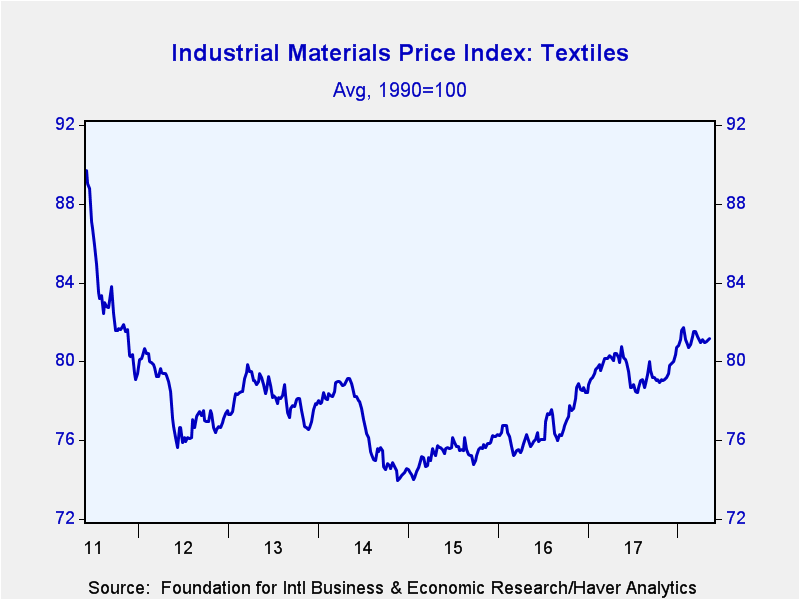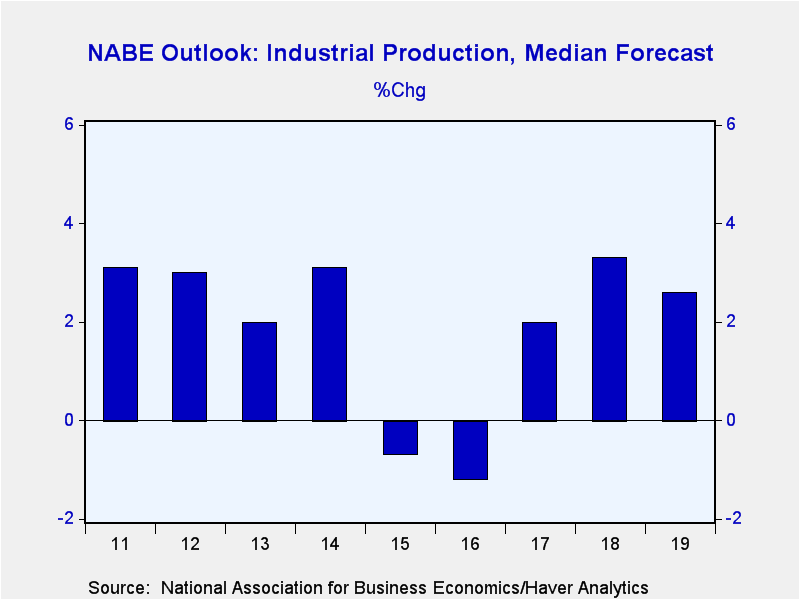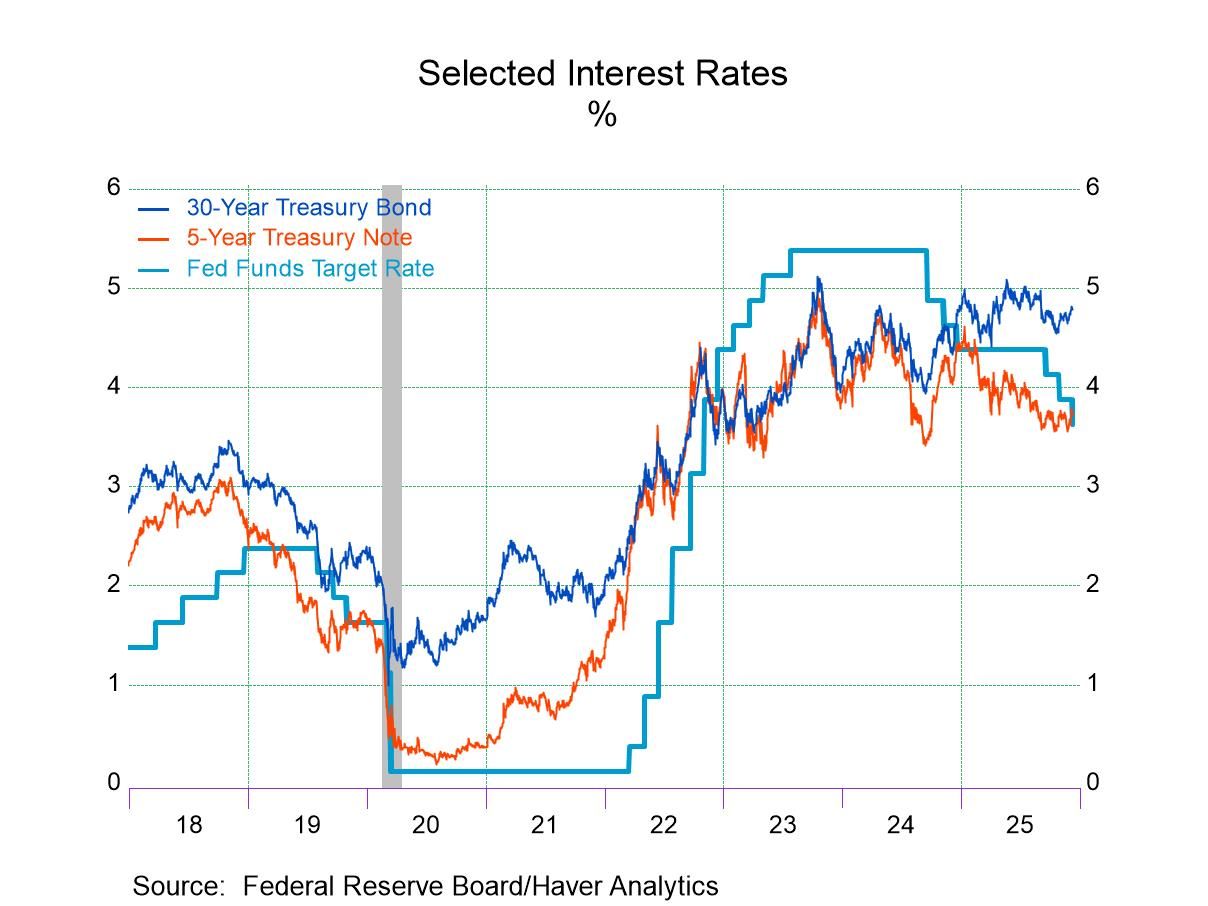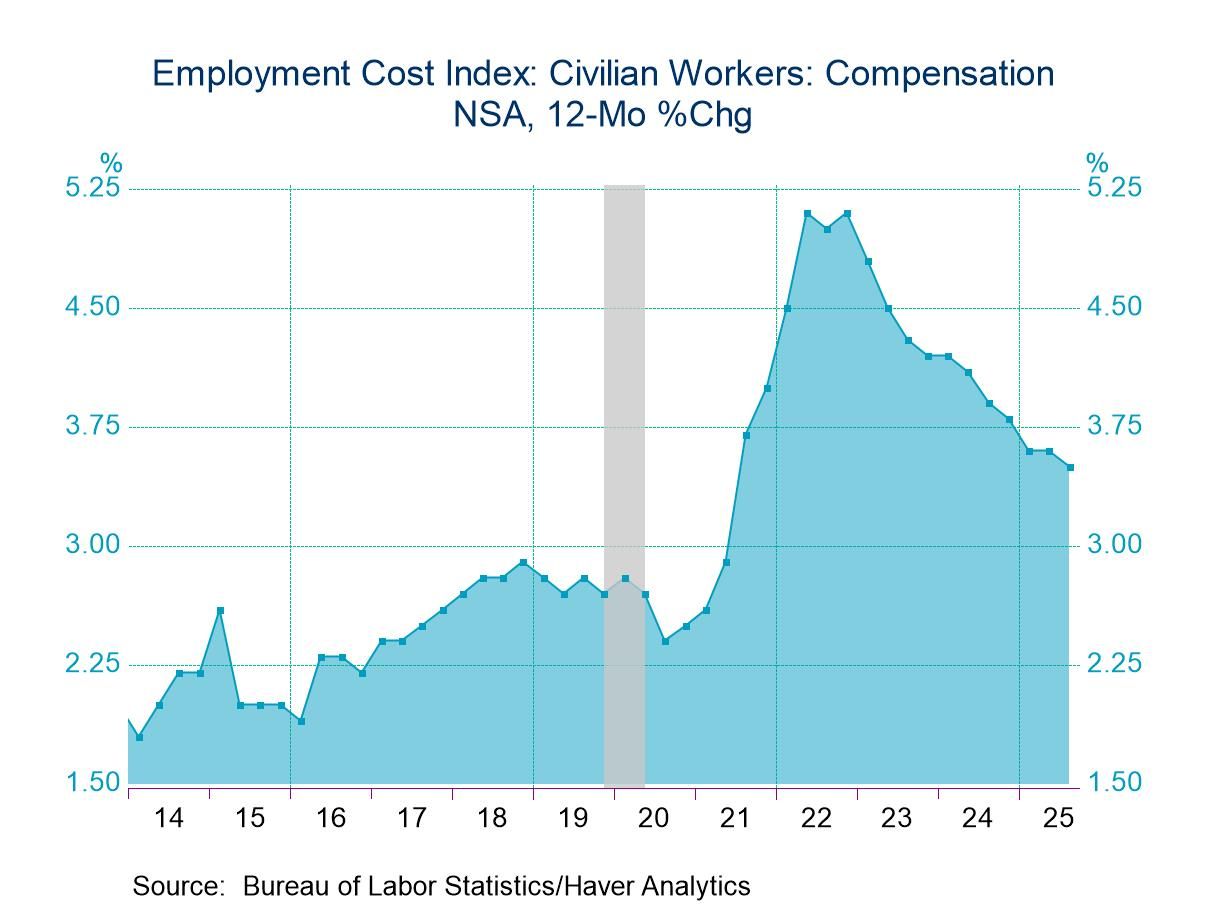 Global| May 14 2018
Global| May 14 2018FIBER: Industrial Commodity Prices Remain Strong
by:Tom Moeller
|in:Economy in Brief
Summary
The Industrial Materials Price Index from the Foundation for International Business and Economic Research (FIBER) increased 1.0% during the last four weeks and 9.2% during the last year. Industrial materials prices overall rose by [...]
The Industrial Materials Price Index from the Foundation for International Business and Economic Research (FIBER) increased 1.0% during the last four weeks and 9.2% during the last year. Industrial materials prices overall rose by roughly one-third versus the early-2016 low. Prompting the strength has been a 3.1% y/y rise in industrial sector output. Recent price patterns have been mixed across sectors as price gains were logged for crude oil, wood and some metals.
Showing the greatest strength recently were prices in the crude oil & benzene sector which increased 3.0% last month and 18.4% y/y. Crude oil prices improved 9.2% m/m and one-half y/y to an average $70.66 per barrel. Benzene prices eased, however, by 2.0% in the last four weeks (+7.8% y/y). In the miscellaneous group, prices rose 1.4% last month and by 4.2% during the past year. Framing lumber prices rose 6.7% last month and by nearly one-quarter y/y. Prices for structural panels inched 0.8% higher during the last four weeks and gained 26.4% during the last year. Natural rubber prices strengthened 5.4% last month, but remained down 14.4% y/y. In the metals sector, prices gained 0.5% during the last month and improved 18.2% y/y. Strength was led by an 8.5% one-month jump in aluminum prices (23.6% y/y). Steel scrap prices increased 4.4% during the last four weeks (36.8% y/y), but copper scrap prices eased 0.4% last month (+22.9% y/y). Amongst other metals, there has been weakness recently. Lead prices were off 3.7% during the last month, but gained 4.9% y/y. Zinc prices fell 5.5% over the last four weeks, but rose 16.5% y/y. In the textile group, overall prices were mixed m/m (+1.6% y/y). Cotton prices rose 2.5% over the last month (9.7% y/y), but burlap prices fell 3.1% m/m, up 0.7% during the past year.
Further strength in prices overall may be coming. The consensus forecast for industrial output from the National Association for Business Economics (NABE) calls for a 3.3% rise in 2018 and 2.6% growth in 2019. During the last ten years, there has been 50% correlation between the three-month change in prices and the change in U.S. industrial output. In addition, factory sector production in the European Union and Japan continues to improve.
Commodity price data can be found in Haver's DAILY, WEEKLY, USECON and CMDTY databases. The NABE forecast is in the SURVEYS database.
| FIBER Industrial Materials Price Index (%) | 1-Mth | 3-Mth | 6-Mth | 12-Mth | 2017 | 2016 | 2015 |
|---|---|---|---|---|---|---|---|
| All Items | 1.0 | 1.2 | 5.5 | 9.2 | 6.7 | 19.2 | -16.3 |
| Textiles | 0.1 | 0.4 | 2.7 | 1.6 | 3.0 | 2.8 | 2.2 |
| Cotton (cents per pound) | 2.5 | 10.1 | 21.8 | 9.7 | 9.8 | 10.2 | 2.6 |
| Metals | 0.5 | -3.1 | 5.1 | 18.2 | 18.6 | 32.9 | -27.8 |
| Aluminum ($ per metric ton) | 8.5 | 6.0 | 9.5 | 23.6 | 26.0 | 13.0 | -19.2 |
| Copper Scrap (cents per pound) | -0.4 | -3.2 | -1.1 | 22.9 | 29.3 | 17.3 | -27.0 |
| Steel Scrap ($ per ton) | 4.4 | 10.1 | 36.8 | 36.8 | 16.8 | 74.5 | -53.8 |
| Crude Oil & Benzene | 3.0 | 2.9 | 7.6 | 18.4 | 8.1 | 20.4 | -19.4 |
| Crude Oil (WTI, $ per Barrel) | 9.2 | 12.0 | 24.3 | 50.8 | 10.9 | 44.3 | -35.8 |
| Miscellaneous | 1.4 | 4.9 | 7.2 | 4.2 | -0.5 | 21.7 | -18.0 |
| Framing Lumber ($ per 1000 board ft.) | 6.7 | 9.1 | 21.8 | 22.4 | 20.0 | 12.9 | -16.4 |
| Natural Rubber (cents per pound) | 5.4 | 7.7 | 12.4 | -14.4 | -29.6 | 89.4 | -22.5 |
Tom Moeller
AuthorMore in Author Profile »Prior to joining Haver Analytics in 2000, Mr. Moeller worked as the Economist at Chancellor Capital Management from 1985 to 1999. There, he developed comprehensive economic forecasts and interpreted economic data for equity and fixed income portfolio managers. Also at Chancellor, Mr. Moeller worked as an equity analyst and was responsible for researching and rating companies in the economically sensitive automobile and housing industries for investment in Chancellor’s equity portfolio. Prior to joining Chancellor, Mr. Moeller was an Economist at Citibank from 1979 to 1984. He also analyzed pricing behavior in the metals industry for the Council on Wage and Price Stability in Washington, D.C. In 1999, Mr. Moeller received the award for most accurate forecast from the Forecasters' Club of New York. From 1990 to 1992 he was President of the New York Association for Business Economists. Mr. Moeller earned an M.B.A. in Finance from Fordham University, where he graduated in 1987. He holds a Bachelor of Arts in Economics from George Washington University.


